Asymmetric Organo-Metal Catalysis: Concepts, Principles, and Applications
Liu-Zhu Gong
Visit to download the full and correct content document: https://ebookmass.com/product/asymmetric-organo-metal-catalysis-concepts-principl es-and-applications-liu-zhu-gong/
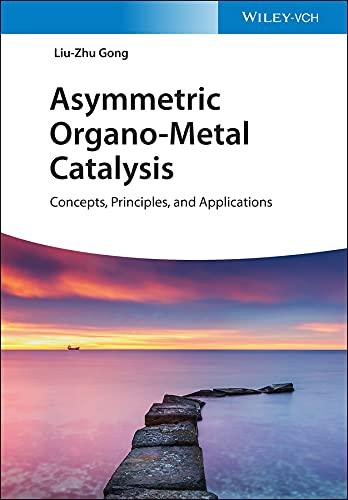
More products digital (pdf, epub, mobi) instant download maybe you interests ...

Metal-Catalyzed Asymmetric Hydrogenation. Evolution and Prospect Montserrat Diéguez
https://ebookmass.com/product/metal-catalyzed-asymmetrichydrogenation-evolution-and-prospect-montserrat-dieguez/
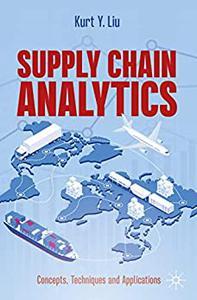
Supply Chain Analytics: Concepts, Techniques and Applications 1st Edition Kurt Y. Liu
https://ebookmass.com/product/supply-chain-analytics-conceptstechniques-and-applications-1st-edition-kurt-y-liu/
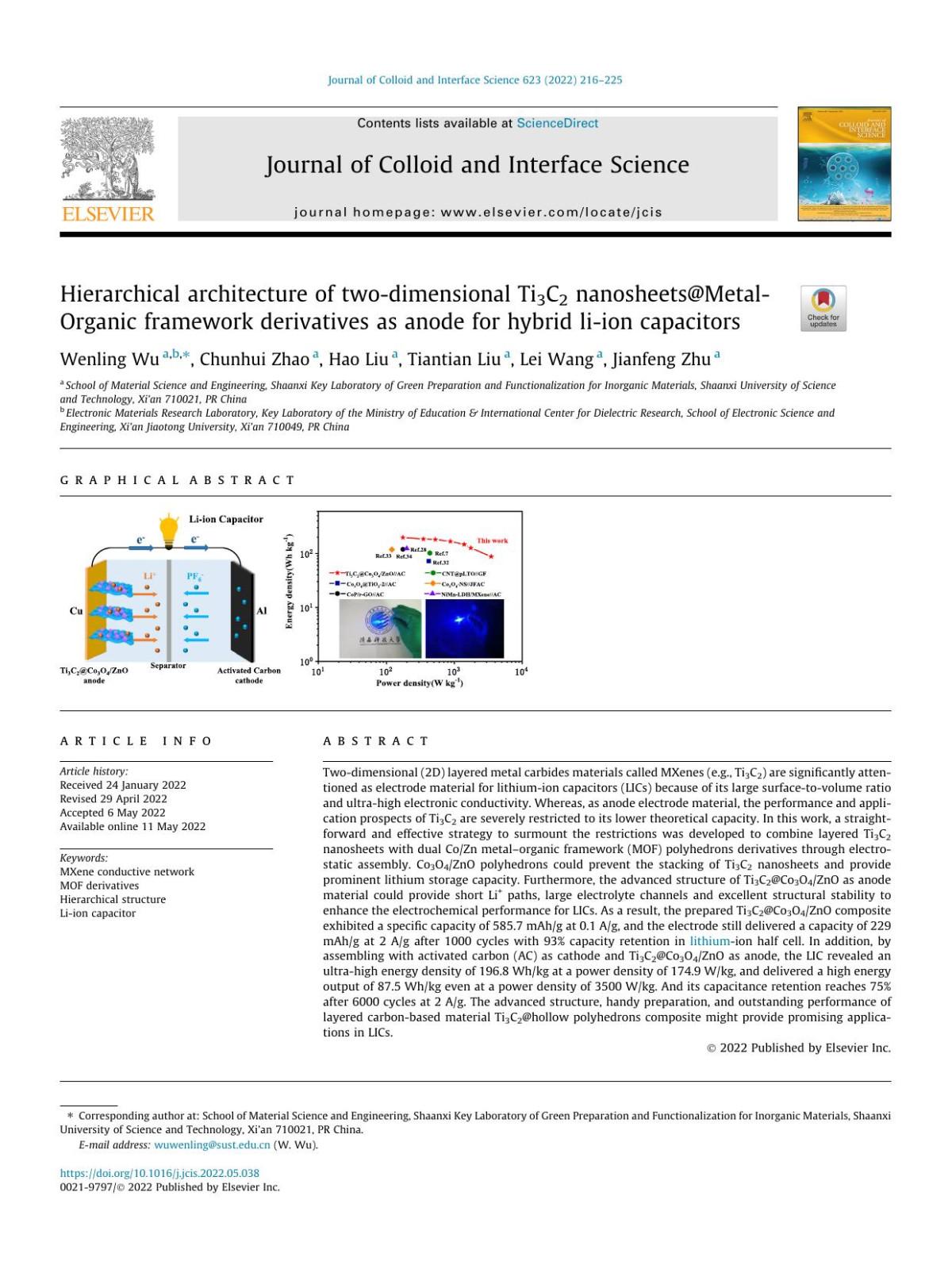

Hierarchical architecture of two-dimensional Ti3C2 nanosheets@Metal-Organic framework derivatives as anode for hybrid li-ion capacitors Wenling Wu & Chunhui Zhao & Hao Liu & Tiantian Liu & Lei Wang & Jianfeng Zhu
https://ebookmass.com/product/hierarchical-architecture-of-twodimensional-ti3c2-nanosheetsmetal-organic-framework-derivativesas-anode-for-hybrid-li-ion-capacitors-wenling-wu-chunhui-zhaohao-liu-tiantian-liu-lei-wang/
Process Industry Economics: Principles, Concepts and Applications 2nd Edition David Brennan
https://ebookmass.com/product/process-industry-economicsprinciples-concepts-and-applications-2nd-edition-david-brennan/

Heterogeneous Catalysis: Materials and Applications
Moises Romolos Cesario
https://ebookmass.com/product/heterogeneous-catalysis-materialsand-applications-moises-romolos-cesario/
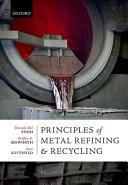
Principles of Metal Refining and Recycling Engh
https://ebookmass.com/product/principles-of-metal-refining-andrecycling-engh/
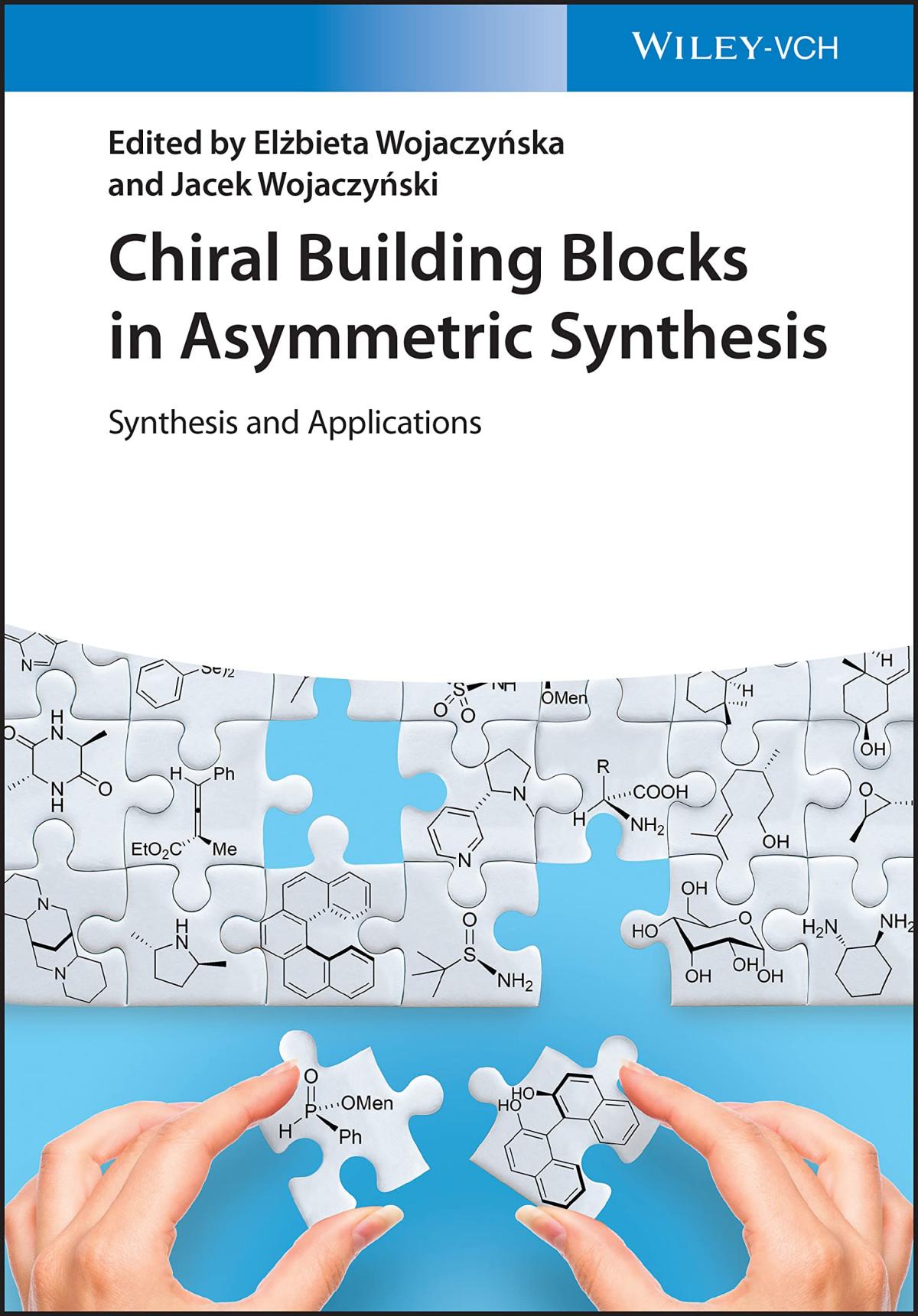
Chiral Building Blocks in Asymmetric Synthesis: Synthesis and Applications Elzbieta Wojaczynska
https://ebookmass.com/product/chiral-building-blocks-inasymmetric-synthesis-synthesis-and-applications-elzbietawojaczynska/

Advanced nanomaterials for catalysis and energy: synthesis, characterization and applications Sadykov
https://ebookmass.com/product/advanced-nanomaterials-forcatalysis-and-energy-synthesis-characterization-and-applicationssadykov/
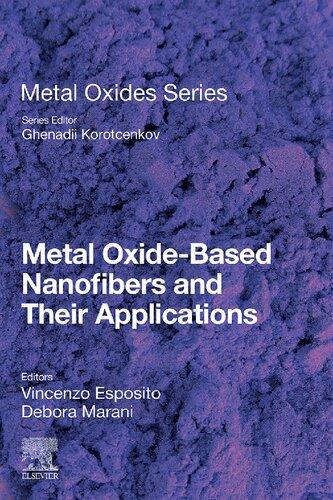
Metal
Oxide-Based
Esposito V.
Nanofibers and Their Applications
https://ebookmass.com/product/metal-oxide-based-nanofibers-andtheir-applications-esposito-v/
AsymmetricOrgano-MetalCatalysis
AsymmetricOrgano-MetalCatalysis
Concepts,Principles,andApplications
Liu-ZhuGong
Author
Prof.Liu-ZhuGong
UniversityofScienceandTechnologyof China
DepartmentofChemistry
230026Hefei China
CoverDesign: Wiley
CoverImage: ©ValentinValkov/Getty Images
Allbookspublishedby WILEY-VCH arecarefully produced.Nevertheless,authors,editors,and publisherdonotwarranttheinformation containedinthesebooks,includingthisbook, tobefreeoferrors.Readersareadvisedtokeep inmindthatstatements,data,illustrations, proceduraldetailsorotheritemsmay inadvertentlybeinaccurate.
LibraryofCongressCardNo.: appliedfor BritishLibraryCataloguing-in-PublicationData Acataloguerecordforthisbookisavailable fromtheBritishLibrary.
Bibliographicinformationpublishedby theDeutscheNationalbibliothek TheDeutscheNationalbibliotheklists thispublicationintheDeutsche Nationalbibliografie;detailedbibliographic dataareavailableontheInternetat <http://dnb.d-nb.de>
©2022WILEY-VCHGmbH,Boschstr.12, 69469Weinheim,Germany
Allrightsreserved(includingthoseof translationintootherlanguages).Nopartof thisbookmaybereproducedinanyform–by photoprinting,microfilm,oranyother means–nortransmittedortranslatedintoa machinelanguagewithoutwrittenpermission fromthepublishers.Registerednames, trademarks,etc.usedinthisbook,evenwhen notspecificallymarkedassuch,arenottobe consideredunprotectedbylaw.
PrintISBN: 978-3-527-34592-2
ePDFISBN: 978-3-527-34596-0
ePubISBN: 978-3-527-34594-6
oBookISBN: 978-3-527-34593-9
Typesetting Straive,Chennai,India PrintingandBinding
Printedonacid-freepaper
10987654321
Contents
Preface ix
1WhyIsOrgano/MetalCombinedCatalysisNecessary? 1
1.1Introduction 1
1.2EarlyStageofOrgano/MetalCombinedCatalysisandGeneral Principles 3
1.3Organo/MetalCooperativeCatalysis 7
1.3.1ControlofStereochemistry 7
1.3.2CooperativeActivationofChemicalBonds 9
1.4Organo/MetalRelayandSequentialCatalysis 11
1.5Conclusion 16 References 16
2Metal/Phase-TransferCatalystCombinedCatalysis 19
2.1Introduction 19
2.1.1EarlyRacemicExamples:PTCandTransitionMetalCo-catalyzed Reactions 19
2.2AsymmetricMetal/Phase-TransferCatalystCombinedCatalysis 20
2.2.1CombinationofCationicPTCandTransitionMetalinAsymmetric Catalysis 22
2.2.2CombinationofAnionicPTCandTransitionMetalinAsymmetric Catalysis 29
2.3Conclusion 33 References 34
3Enamine-MetalCombinedCatalysis 39
3.1Introduction:CombinedEnamineActivationandMetalCatalysis 39
3.2CatalyticAsymmetric α-AllylationofCarbonyls 39
3.2.1OxidativeAddition-InitiatedAllylicAlkylation 39
3.2.2MetalHydride-InitiatedAllylicAlkylation 48
3.2.3LewisAcid-MediatedSN 1orSN 2Reaction 50
3.3CatalyticAsymmetricSubstitution 51
3.4CatalyticAsymmetric α-Alkenylation, α-Arylation,and α-TrifluoromethylationofCarbonylCompounds 55
3.5AsymmetricAdditiontoAlkynesbyCooperativeCatalysiswith π-Lewis Acids 59
3.6CatalyticAsymmetricPropargylicSubstitutionReactionofCarbonyl Compounds 61
3.7CatalyticAsymmetric α-OxidationofAldehydes 63
3.8RelayCatalysis 64
3.8.1CatalyticAsymmetricCrossDehydrogenativeCoupling 64
3.8.2TransformationofOlefins 68
3.9Conclusion 70 References 71
4IminiumandMetalCombinedCatalysis 75
4.1Introduction:IminiumActivationandMetalCombinedCatalysis 75
4.2IminiumActivationandPalladiumCatalysis 76
4.2.1EnantioselectiveConjugateAdditionReaction 76
4.2.2Asymmetric[3+2]CycloadditionViaRing-OpeningOxidative Addition 77
4.2.3AsymmetricMichaelAdditionandCarbocyclizationCascade 81
4.2.4AsymmetricOxidativeCascadeReaction 83
4.3IminiumActivationandCoinageMetalCatalysis 83
4.4IminiumActivationandOtherMetalCatalysis 85
4.5Conclusion 87 References 88
5BrønstedAcidandTransitionMetalCooperativeCatalysis 91
5.1Introduction 91
5.2EarlyStageofMetal/BrønstedAcidCooperativeCatalysis 93
5.3MetalAlkynylide-MediatedTransformations 93
5.4 π-Allyl-Metal-MediatedTransformation 95
5.5AsymmetricHydrogenationofC—NDoubleBond 107
5.6MetalCarbene-MediatedTransformations 110
5.7 π-LewisAcidMediatedTransformations 116
5.8SummaryandOutlook 119 References 120
6Metal-BrønstedAcidRelayCatalysis 125
6.1Introduction 125
6.2 π-LewisAcid-ChiralBrønstedAcidRelayCatalysis 125
6.2.1Hydroamination-InitiatedCascadeReaction 127
6.2.2HydroalkoxylationMediatedRelayCatalysis 132
6.2.3HydrosiloxylationMediatedRelayCatalysis 136
6.2.4RelayCatalysisInvolvingtheAdditionofNitroneorNitroGroupto Alkynes 138
6.2.5RelayCatalysisInvolvingtheAdditionofCarbonNucleophilesto Alkynes 139
6.3Metal/BrønstedAcidRelayCatalysisInvolvingAlkeneMetathesis 141
6.4Metal/BrønstedAcidRelayCatalysisInvolvingAlkene Isomerization 144
6.5Metal/BrønstedAcidRelayCatalysisInvolvingHydrogenation 151
6.6Palladium/BrønstedAcidRelayCatalyticAsymmetricAllylationof Carbonyls 155
6.7Metal/BrønstedAcidRelayCatalysisInvolvingHydroformylation 157
6.8Metal/BrønstedAcidRelayCatalysisInvolvingMetalCarbene Formation 160
6.8.1CascadeMetalCarbeneFormationandAsymmetricProtonation 160
6.8.2MultipleCascadeReactionInitiatedwithMetalCarbene 165
6.9LewisAcid/ChiralBrønstedAcidRelayCatalysis 167
6.10Miscellaneous 169
6.11SummaryandOutlook 172 References 173
7LewisBase–LewisAcidCooperativeCatalysis 179
7.1Introduction:CombinedLewisBaseandLewisAcidActivations 179
7.1.1EarlyExamplesinLewisBase–LewisAcidCooperativeCatalysis 183
7.2AsymmetricReactionsDrivenbyTertiaryAmine-MediatedAmmonium Enolates 184
7.2.1AsymmetricBaylis–HillmanReactions 184
7.2.2Asymmetric[2+2]Reactions 186
7.2.3Asymmetric[4+2]Reactions 192
7.2.4Asymmetric α-FunctionalizationofCarbonylCompounds 196
7.3AsymmetricReactionsDrivenbyNHC-MediatedHomoenolates 198
7.3.1AsymmetricAnnulationReactions 201
7.3.2Asymmetric β-ProtonationReactions 211
7.3.3AsymmetricKineticResolutions 215
7.4AsymmetricReactionsDrivenbyNHC-MediatedAzolium Enolates 216
7.5AsymmetricReactionsDrivenbyAmmoniumSalts 221
7.6AsymmetricReactionsDrivenbyNHC-Mediated α,β-UnsaturatedAcyl Azoliums 225
7.6.1Asymmetric[3+3]Reactions 225
7.6.2AsymmetricCascadeReactions 229
7.6.3AsymmetricKineticResolutions 231
7.7Conclusion 235 References 235
8LewisBase-TransitionMetalCooperativeCatalysis 241
8.1Introduction 241
8.2PhosphineandTransitionMetalCooperativeCatalysis 243
8.3N-HeterocyclicCarbeneandTransitionMetalCooperative Catalysis 244
8.3.1 π-AllylMetalMediatedTransformations 245
8.3.2Alkynyl-metalMediatedTransformations 253
8.3.3Metal-allenylideneMediatedTransformations 254
8.4TertiaryAmineandTransitionMetalCooperativeCatalysis 258
8.4.1 π-AllylMetalMediatedTransformations 258
8.4.2 π-Benzyl-metalMediatedTransformations 263
8.4.3Metal-allenylideneMediatedTransformations 265
8.4.4OtherTransitionMetalMediatedTransformations 267
8.5Conclusions 271 References 271
9ChiralOrganocatalystCombinedwithTransitionMetalBased PhotoredoxCatalyst 277
9.1Introduction 277
9.2Covalent-BasedOrganocatalyticActivationinCombinationwith TransitionMetal-BasedPhotoredoxCatalyst 279
9.2.1ChiralAmine/PhotoredoxCombinedCatalysis 279
9.3Photoredox-MediatedSOMOCatalysis 284
9.4NucleophilicOrganocatalystinCombinationwithPhotoredox Catalyst 288
9.5Noncovalent-BasedOrganocatalyticActivationinCombinationwith TransitionMetal-BasedPhotoredoxCatalyst 290
9.5.1ChiralPhosphate/PhotoredoxCombinedCatalysis 290
9.6AsymmetricIon-Pair/PhotoredoxCombinedCatalysis 295
9.7SummaryandOutlook 297 References 297
10ApplicationsinOrganicSynthesis 301
10.1Introduction 301
10.2ApplicationsofChiralPhosphoricAcid-MetalCooperative Catalysis 301
10.3ApplicationofTransitionMetalCatalysisCombinedwithSecondary AmineCatalysis 305
10.4ApplicationofPhotocatalysisCombinedwithOrganocatalysis 310
10.5ApplicationofLewisBase–LewisAcidCooperativeCatalysis 312
10.6ApplicationofLewisBase–TransitionMetalRelayCatalysis 316
10.7ApplicationofMetal-BrønstedAcidRelayCatalysis 316
10.8Conclusion 320 References 320
Index 325
Preface
Thealarmingthalidomidetragedyofthe1960shasimmediatelyledtoaworldwide revisitofenantiomersinthemedicinalchemistryandpharmaceuticalindustries,as thebiologicalsystemswouldrecognizeeachenantiomerforeithertargetedactivityorinactivityorseveresideeffect.Ofallthesyntheticstrategiesdevelopedto distinguishenantiomersintheinterveningyears,thecatalyticprocessinducedby achiralmolecule,namelyasymmetriccatalysis,isundoubtedlythemostefficient approachtoaccessenantiomericallypurecompounds.Inthiscontext,enzymatic transformationsarethemostnaturalway,albeitwithlimitedtoleranceofreaction conditions;transitionmetalcomplexesareofstablyincreasingimportanceandpopularityinbothfundamentalresearchandindustrialapplications;organocatalysis employspurelysmallorganicmoleculesasthecatalyststoofferaconvenientand greensolutiontoasymmetricsynthesis.
Inthepursuitofidealsynthesis,manyhaveexperiencedtheshortageofeffective chiralcatalystsinregardstobondactivationorstereochemicalcontrol.So,insteadof denovodesignandsynthesisofnewchiralcatalysts,whydon’ttrycatalystsblending: CombinedCatalysis?Incompatibilitiesnotwithstanding,therearevastopportunities incombiningdistinctcatalystsinasingleoperationforimprovingreactionefficiency orofferingauniquesolutiontochallengingtransformations.Thisbookfocuseson theconceptof Organo/MetalCombinedCatalysis,theproofofconcept,andthoroughgoingdiscussionsofthereactionsachieved,asthenumberofpublicationson thisfieldhasbeenincreasingexponentiallyduringthelastdecades. Organo/Metal CombinedCatalysis datesbacktotheearly2000swhenachiralorganocatalystwas exploitedtoactivatethenucleophiles,thuscontrollingthestereoselectivityofan allylicalkylationwith π-allylpalladiumspecies,inthemostdesirablecooperative manner.Interestingly,onecatalystofacompatiblecatalyticsystemmayserveasa relayshuttleforothercatalyticcyclestoenableorthogonalbond-formingreactions, whichhasbeennamedasrelaycatalysis(alsoknownascascade,domino,ortandemcatalysis).Oncetheincompatibilityissuebetweencatalystshasdeveloped,the Organo/MetalCombinedCatalysis fellsintoacategoryofsequentialcatalysis,acompromiserelaycatalysisfeaturingstepwisecatalystsaddition.
Thisbookcoversthewholearrayoforgano/metalcombinedcatalyticsystems achievedtodate,including10chapters:generalintroduction(Chapter1); phase-transfer-catalystandmetals(Chapter2);enamineandmetals(Chapter3);
x Preface iminiumandmetals(Chapter4);Brønstedacidandtransitionmetalcooperative catalysis(Chapter5);Brønstedacidandmetalrelaycatalysis(Chapter6);Lewisbase andLewisacidcooperativecatalysis(Chapter7);Lewisbaseandtransitionmetal cooperativecatalysis(Chapter8);chiralorganocatalystandtransitionmetal-based photoredoxcatalyst(Chapter9);applicationsintotalsynthesis(Chapter10).All knowledgeableauthors,Dr.Zhi-YongHan,Dr.JieYu,Dr.ChangGuo,Dr.JinSong, Dr.Dian-FengChen,andDr.Pu-ShengWang,havesignificantlycontributedto thedevelopmentof Organo/MetalCombinedCatalysis,andcanprovideinvaluable perspectives.
Thisbookcouldserveasanexcellenttextbookforgraduatestudentsanda greathandbookforresearchersandotherpractitionersatalllevelsofasymmetric synthesis.
WhyIsOrgano/MetalCombinedCatalysisNecessary?
1.1Introduction
Molecularchiralityhasplayedanimportantroleinabroadscopeoffields,includingsyntheticchemistry,drugdiscovery,biologicalsystem,andmaterialsscienceand willcontinuetoexertagreatimpactonphysicalscience.Suchunparalleledsignificanceofchiralityleadstoincreasingdemandforefficientasymmetricprotocolsto buildupchiralstructures.
Chiralresolutionistheoldestwaytoisolateopticallypurechiralmolecules fromtheracemicform.Chiralpool-andauxiliary-inducedasymmetricsynthesis hasfrequentlybeensyntheticstrategiesofchoicetocreatechiralelementsin organicsynthesis[1].Althoughchiralauxiliary-inducedasymmetricsynthesis hasbeenprevalentlyappliedtotheasymmetricsynthesisofnaturalproductsand pharmaceuticallysignificantsubstances,andthusheldthehistoricalimpacton syntheticchemistry[2],theinstallationandremovalofchiralauxiliarybasically requireadditionalreactionstepstotherebyattenuatethesyntheticefficiency.
Asymmetriccatalysishasgloballybeenacceptedasthemostefficientconceptto stereoselectivelybuildupmolecularchirality.Sincetheadventofasymmetriccyclopropanationandhydrogenationcatalyzedbychiralcopperandrhodiumcomplexes, respectively[3,4],asymmetricmetalcatalysishascontinuouslybeenthecentral focusofasymmetricsynthesis.Theversatilityandrobustnessofmetalsintheactivationofawidespectrumofchemicalbonds,eventhosewithhighbondenergy, haverenderedmanyfamiliesofasymmetrictransformationstobeaccessedbyeither Lewisacidortransitionmetalcatalysis[5,6].
Thecontrolofstereochemistryinasymmetricmetalcatalysisprincipallyrelieson thechiralligandandtoalargedegreeontheligandacceleration[7].Thestereochemicalcontroleventsinvolvedinthetransitionmetalcatalysismightbeoneorsome ofthetypicalelementaryreactionsincludingchiralligandcoordination,oxidative addition,insertion,andreductiveelimination.Theoxidativeadditionoccursmore easilywithanelectronicallyricherandlow-valentmetaltoincreasetheoxidation stateandcoordinationnumberofthemetalcenter;thereforetheligandcoordinationfacilitatesthisreaction.Theglobalandlong-standinginterestinthedesignand developmentofchiralligandshasculminatedintheexplosiveappearanceofprivilegedligands[8],whichactuallypropeltheproliferationofelegantandpractical AsymmetricOrgano-MetalCatalysis:Concepts,Principles,andApplications, FirstEdition.Liu-ZhuGong. ©2022WILEY-VCHGmbH.Published2022byWILEY-VCHGmbH.
1WhyIsOrgano/MetalCombinedCatalysisNecessary?
Figure1.1 Transitionmetal-catalyzedreactionsinitiatedwithoxidativeaddition. (a)Hydrogenation.(b)Crosscoupling.
asymmetricprocessescommencingwiththeoxidativeaddition,forexample,asymmetrichydrogenationandcross-couplingreaction(Figure1.1).
High-valenttransitionmetalshavealsobeenfoundtoenableatremendous numberoforganicreactions.Incontrasttoabundantlyavailablechiralligands forasymmetriccatalysisbeginningwiththeoxidativeaddition,whichundergoes withlowoxidationstatemetals,ratherfewerchiralligandsarecompatiblewith high-valentmetalcatalysisandreactionsundergoingunderoxidationconditionsto poseagreatchallengetothecontrolofstereoselectivity.Forexample,althoughthe high-valentmetal-catalyzedtransformationscommencingwithnucleometallation (Eq.(1),Figure1.2),arylandallylicC–Hactivation(Eqs.(2)and(3)),havebeen wellestablished,averylimitednumberofchiralligandscanenablehighlyenantioselectivevariants,inparticular,thoseusingmolecularoxygenastheterminal oxidant[9].Sofar,chiralLewisacidsaresuccessfulrepresentativesamongmassive asymmetrichigh-valentmetalcatalysis[10].Assuch,anewconcepttobreakthe conventionalwisdomthatreliesonthechiralligandtocontrolthestereochemistry oftransitionmetalcatalysisisgreatlydesirable.
Asymmetricorganocatalysisrepresentsanimportanttool,independent,and conceptuallydistinctfrommetalcatalysis,tobuildupmolecularchirality[11,12]. Thetypicalprinciplesinorganocatalysisfortheactivationofchemicalbondscover abroadscopeofconcepts,includingaminecatalysisbyenamineraisinghighest occupiedmolecularorbital(HOMO)andiminiumloweringlowestunoccupied molecularorbital(LUMO),Brønstedacidcatalysisbyhydrogen-bondinginteraction orprotonation,NHCcatalysisviaumpolungofaldehyde,Lewisbasecatalysisby nucleophilicadditiontoeithercarboxylicacidderivativesorelectron-deficient carbon–carbondoublebondstoformreactiveenolateoracylammoniumspecies, andphasetransfercatalysisbyusingammoniumandphosphoniumtoformion pairswithanionicnucleophiles[13].Suchversatileprinciplesintheactivation ofchemicalbondsandstructuraldiversityoforganocatalystshaveenabledthe explosiveappearanceoffundamentallynovelasymmetricreactionsandprocesses featuredbyenvironmentallybenign,atom,andstepeconomies.Nevertheless,the
Figure1.2 Representativesofhigh-valentmetalcatalysis.
completedependenceupontheinteractionsbetweenahighlyactivefunctionality andtheorganocatalyst(Table1.1)posestheorganocatalysisessentialconstraintsto activaterelativelyinactivechemicalbondsandunfunctionalizedsubstrates.
1.2EarlyStageofOrgano/MetalCombinedCatalysis andGeneralPrinciples
Thecombinationofasymmetricorganocatalysisandmetalcatalysisintegratesthe catalyticactivityofmetalsandorganocatalysts,henceallowsthesimultaneousor sequentialoccurrenceofmultiplybond-breakingandformingeventsinstereochemicalcontroltoprovidemuchmorediverserangesofconceptsorprinciplescapableof enablingunconventionalenantioselectivetransformationsthataretoughlyaccessed bytheindividualcatalyst[14].Veryearlyreportsontheasymmetricorgano/metal combinedcatalysisdescribeaPd-catalyzedasymmetricallylicalkylationofanimino ester,inconcertwithchiralphasetransfercatalysis[15].Gongandcoworkersfound thattheuseofacinchonaalkaloid-derivedammoniumbromide 4a thatCoreydeveloped[16]asthechiralphasetransfercatalyst,incombinationwithanachiralpalladiumcomplexoftriphenylphosphine,isabletoenablethereactiontodeliver59%ee [15].Takemotoidentifiedthattheelectrondensityofthetrivalentphosphorusligand exertsconsiderableimpactonthereactionperformanceandthehighestenantioselectivityof94%eewasobtainedwith 4b thatLygointroduced[17]inthepresenceof triphenylphosphiteligand.Inboththecases,therespectiveandsynergisticactionof thepalladiumcomplexandchiralPTContheallylicester 1 andnucleophile 2 rendersthereactiontoproceedmoreefficientlyviaatransitionstate TS-1 andallows thestereochemicalcontroltobeaccessedbychiralphasetransfercatalyst,alone (Figure1.3).Thisstrategyindicatesthatthestereoselectionofmetal-catalyzedreactionscanbecontrolledwithoutchiralligand,instead,byaco-organocatalyst,thus
Table1.1 Typicalactivationmodesinorganocatalysis(OC).
ConceptsofOCActiveintermediatesApplicablesubstratesReactiontypes
Enaminecatalysis N
Iminiumcatalysis N
Brønstedacidcatalysis X H B* X H or *B
NHCcatalysis R HO N X R1 R2 R3
Lewisbasecatalysis R LB O
Phasetransfercatalysis
Enolizablealdehydesand ketones Aldolreaction Mannichreaction Michaeladdition
EnalandenonesMichaeladdition Diels–Alderreaction Friedel–Craftsreaction
Aldehydes,ketones,and imines,enal,andenones Reduction Friedel–Craftsreaction Michaeladdition
AldehydesAnnulation Benzoinreaction Stetterreaction
Ketene,acylhalides, anhydride,andother analogues
[2+2]cyclization [4+2]cyclization Kineticresolution R LB O
C(R′)3 R4P C(R′)3 or
Enals,enones,and α,β-unsaturatedesters [3+2]cycloaddition Baylis–Hillmanreaction
AcidicnucleophilesAlkylation Aldolreaction Mannichreaction Michaeladdition
[Pd(allyl)Cl]2/L, 4a or 4b Base, Toluene, 0 °C
ee [Pd(allyl)Cl]2 (1 mol%) PPh3 (2.5 mol%) [Pd(allyl)Cl]2 (9 mol%) P(OPh)3 (40 mol%) CsOH•H2O50% KOH (aq) 1 2 3
(10 mol%) 82%, 94% ee
Chiral PTC controls the stereochemistry of nucleophile Pd activates the electrophiles by oxidative addition
Figure1.3 PdandPTCcooperativecatalysis.
Figure1.4 Pdandphosphinecooperativecatalysis.
opensupawindowtoseekunconventionalmodestoaddressissuesofthestereochemicalcontrolencounteredintheasymmetricmetalcatalysis.
ThecooperativecatalysisoftransitionmetalandLewisbasewasfirstshowcased byKrischeandcoworkers[18].TributylphosphineundergoesRauhut–Currier typeaddition[19]withtheenonemoietyof 5 togenerateatransientenolateand simultaneously,thepalladiumcomplexreactswiththeallyliccarbonateparttogive a π-allylpalladiumspecies.Asubsequentintramolecularsubstitutionoccursviaa transitionstate TS-2,andfollowedbyeliminationoftributylphosphine,toyieldthe finalproduct 6 (Figure1.4).TheperfectintegrationoftheLewisbaseandpalladium catalysisoffersauniqueactivationmodetomakethereactionthatisotherwise unabletoproceedpossible.
ThecooperativecatalysisofLewisbaseandLewisacidtodriveanasymmetric [2+2]annulationofacetylchloride 7 andiminoesters 8 wasreportedbyLectkaand coworkers[20].Thechelationofindiumtriflatetotheiminoester 8 enhancesthe reactivityoftheiminefunctionality.Thus,thenonmetal-coordinatedzwitterionic enolate Int-1 generatedfromtheacetylchloride 7 withBQ 10 andbase 11 isableto undergoanenantioselectiveMannich-typereactionwithanIn(III)cocatalyst-bound iminoester Int-2 toformanintermediate Int-3.Finally,anintramolecularamide bondformationdelivers β-lactams 9 andregeneratesthecatalyst(Figure1.5).
1WhyIsOrgano/MetalCombinedCatalysisNecessary?
(10 mol%), In(OTf)3(10 mol%)
11, Toluene Up to 98%, 99% ee
Figure1.5 LewisacidandLewisbasecooperativecatalysis.
(5 mol%) 15 (30 mol%)
Rh(COD)2OTf (4 mol%) BIPHEP (4 mol%) 19a(4 mol%) DCE, H2 (1 atm), 40 °C
(20 mol%), DBU CH2Cl2, 23 °C Up to 82%,
Figure1.6 Typicalorgano/metalcombinedcatalysisintheearlystage.Source:Modified fromArndtsenandGong[25].
Inthesameperiod,theenamineandpalladium[21],Brønstedacidsandtransitionmetals[22,23],NHCandmetalcomplexes[24],andsomeothercombined catalystsystemsweresuccessivelyreported,providingunusualfundamentalbond activationmodesthatturnouttobeversatileplatformstoallowfortheproliferation ofunprecedentedtransformations(Figure1.6)[25].
Mostorganocatalystscontainheteroatoms,whichbasicallycoordinatetometal catalyststochangethecatalyticactivityandtoresultinthe“self-quenching”insome cases.Asaconsequence,thecompatibilityofmetalsandorganocatalyststurnsout tobethekeytosuccessintheorgano/metalcombinedcatalysis.Ontheotherhand, thesynergisticeffectamongthecomponentsofthecombinedsystemsisactually mostdesirable.Basedontheactivationmodesandreactionpathway,theasymmetricorganocatalysiscombinedwithmetalcatalysisgenerallyconsistsofcooperative catalysis,relaycatalysis(alsoknownascascade,demino,andtandemcatalysis),and sequentialcatalysisaswell(Figure1.7)[26].
Figure1.7 Categoriesofasymmetricorganocatalysiscombinedwithmetalcatalysis. (a)Cooperativecatalysis.(b)Relaycatalysis.(c)Sequentialcatalysis.Source:Chenetal.[26].
1.3Organo/MetalCooperativeCatalysis
1.3.1ControlofStereochemistry
Cooperativecatalysisreferstoacatalyticprocess,whichisinitiatedviathesimultaneousandrespectiveactivationoftwoormoresubstrates,functionalities,orchemicalbondsenabledbytwoormoreindividualmetalandorganocatalysts(Figure1.7a). Thecooperativecatalysisactuallyprovidesmorepossibilitiestocontrolthestereochemistryofanasymmetrictransformationbytuningthechiralityofeachindividual catalyst.Forexample,ifthemetalonlyworksefficientlyforbreakingorassembling thechemicalbonds,butisunabletocontrolthestereochemistrybyvaryingchiral ligands,thechiralorganocatalysisconceptscanbeadaptedtoconquerthestereochemicalcontrolissue(Figure1.8a).Incasenoappropriateorganocatalystsareable toefficientlyinducethestereoselectivity,chiralmetalcomplexeswouldstandinfor addressingthestereochemicalissuewhiletheorganocatalystsolelyactstoactivate
Figure1.8 Strategiesofstereochemicalcontrolincooperativecatalysis.(a)Combine achiralmetalcomplexwithchiralorganocatalyst.(b)Combinechiralmetalcomplexwith achiralorganocatalyst.(c)Combinechiralmetalcomplexwithchiralorganocatalyst.Source: Hanetal.[27].
Figure1.9 ChiralLewisacidandachiralLewisbasecooperativecatalysis.Source:Chen etal.[28].
Figure1.10 Asymmetricallylationenabledbychiralpalladiumcomplexandachiral amine.Source:Bihelovicetal.[29].
thesubstrates(Figure1.8b).Ifneitheroftheconceptsoffershighstereoselectivity, bothchiralmetalcomplexandchiralorganocatalystcanbeappliedtosynergistically controlthestereoselectivity(Figure1.8c)[27].
Thecombinationofachiralmetalcatalystsandchiralorganocatalystsappeared atthebeginningofthisfield[15].Inthesameperiod,oneoftheearliestexamples describingmergingthechiralmetalcomplexandachiralorganocatalystwasintroducedbyFengandcoworkerswhoidentifiedthatthecombinationofanaluminum complexofchiralsalen 26 andan N -oxideLewisbase 27 wasabletoaffordahighly efficientandenantioselectivecyanosilylationofketones 24 (Figure1.9)[28].
Saicicandcoworkersdescribedthecombineduseofachiralpalladiumcomplex of(R)-Ph-MeOBiPHEP 30 andanachiralamine 31 toestablishahighlyenantioselectiveintramolecular α-allylationofaldehydes 28 (Figure1.10)[29].
Abinarycatalystmadeupofachiralphosphoricacidandaniridiumcomplex 34 adornedwithNoyori-diamineligandallowsahighlyefficientasymmetrichydrogenationofacyclicimines 32 togivechiralamine 33 inalmostperfectlevelsof enantioselectivity.Inthiscase,thematchedchiralitybetweenthechiraldiamine ligandoftheiridiumcomplex 34 andthechiralphosphoricacid(R)-19a offershigh stereoselectivity(Figure1.11)[30].
Figure1.11 Asymmetrichydrogenationenabledbychiraliridiumcomplexandphosphoric acid.Source:ModifiedfromLietal.[30].
[Ir(cod)Cl]2(2 mol%)
Ligand 38 (8 mol%)
(S,R)-37
(S,S)-37
80%, >99% ee, 20 : 1 dr With (R)-38, 39b 71%, >99% ee, >20 : 1 dr With (S)-38, 39b
(R,R)-37
>99% ee, >20 : 1 dr With (R)-38, 39a
R,S)-37
>99% ee, 15 : 1 dr With (S)-38, 39a
Figure1.12 Stereodivergentcooperativecatalysis.Source:ModifiedfromKrautwald etal.[31].
Inthecasesofcombiningchiralmetalandchiralorganocatalysts,ifbothofthem arerobustenoughtocontrolthestereochemistry,thecooperativecatalysiswillbe abletoestablishthestereodivergentconstructionofchiralstructuresbysimplyvaryingthestereochemistryofeachindividualchiralcatalyst.Theproofofconceptin thisfieldwasdemonstratedbyCarrierawhofirstreportedastereodivergentallylic alkylationbetween α-enolizablealdehyde 35a andanallylicalcohol 36a basedon theasymmetriccooperativecatalysisofiridiumcomplexofchiralphosphoramidite 38 andchiralprimaryamine 39,allowingaccesstofourstereomersbyalteringthe stereochemistryofthechiralligandandchiralamine(Figure1.12)[31].Afterward, thecooperativecatalysisofchiralrhodiumcomplexandchiralamine,chiraliridium complexandchiralLewisbase,aswellastheiridiumcomplexandchiralNHCcarbenewassuccessivelydiscoveredbydifferentresearchgroupsfortheestablishment ofstereodivergentprocesses[32].
1.3.2CooperativeActivationofChemicalBonds
Simultaneousactionofboththemetalandorganocatalystonthesamesubstrate actuallyprovidesauniquetooltoactivateachemicalbondandtherebymakesthe reactionthatmaynotworkupon,beingpromotedbyeitherofindividualcatalysts probablyoccur.Thefeasibilityandrobustnessofthisstrategyhavebeenimplicitin theactivationofrelativelyinactivechemicalbonds.Forinstance,boththeallylic C—Nbondofallylamines 40 andC—Obondofallylicalcohols 41 canbeactivated byprotonationasshownin Int-4 andhydrogen-bondinginteractionasshown in Int-5 withthechiralphosphoricacid,respectively,tofacilitatetheoxidative additionofthepalladiumcomplextogivethe π-allylpalladiumphosphatecomplex intermediate,whichsmoothlyundergoestheenantioselectivesubstitutionreaction withtheenamine Int-6 viaatransitionstate TS-4 togive α-allylicaldehydes 42 (Figure1.13)[33].Itisworthytomentionthatneithertheallylaminenortheallylic
1WhyIsOrgano/MetalCombinedCatalysisNecessary?
(R)-19a (1.5 mol%)
Pd(PPh3)4 (3 mol%)
5 Å MS, MTBE, 40 °C Then 2 N HCl
(S)-19a (3 mol%) Pd(PPh3)4 (1.5 mol%) Ph2CHNH2 (40 mol%) 5 Å MS, Toluene, 40 °C
Figure1.13 AllylationofaldehydesbycooperativecatalysisofPd,chiralBrønstedacid, andamine.Source:Mukherjeeetal.[33].
(R)-19a (3 mol%) Pd(PPh3)4 (3 mol%) PhC(CH3)2NH2 (60 mol%) 2,6-DMBQ (150 mol%)
3 Å MS, MTBE, 60 °C Then 2 N HCl
Figure1.14 AsymmetricallylicC–Hfunctionalizationbycooperativecatalysis.
alcoholcanundergotheoxidativeadditionwithouttheassistanceoftheBrønsted acid[34].
Evenmoreremarkably,theBrønstedacidcanfacilitatethepalladium-mediated allylicC–Hcleavage.Thus,thecombinationofthepalladiumcomplex,chiral Brønstedacid,andprimaryamineallowsanenantioselectiveoxidative α-allylation ofaldehydes 35 with α-olefins 43 [35].ThePd-mediatedallylicC–Hoxidationgeneratesthe π-allylpalladiumphosphatecomplex Int-7 thatundergoesasymmetricallylationwithenamine Int-8 viathetransitionstate TS-4′ similartoList’smodel TS-4 tosmoothlygivethechiralaldehydes 42 inexcellentenantioselectivity(Figure1.14).
Adoptionofvisiblelightphotocatalysistocombinewithchiralorganocatalysis leadstoanotherversatileconceptforthedevelopmentofasymmetrictransformationsthatareunabletoworkbasedontraditionalbond-activationandassembly strategies[36].MacMillanandcoworkerfirstdescribedtheintegrationofaphotocatalyst 48 andachiralaminecatalyst 47a toestablishanefficient α-alkylationofaldehydes 44 with α-bromocarbonyls 45 (Figure1.15)[37].Subsequently,mergingthe
Figure1.15 Asymmetricorganocatalysiscombinedwithphotocatalysis.Source:Modified fromNicewiczandMacMillan[37].
ruthenium(II)oriridium(III)visiblephotocatalystsandchiralBrønstedacids[38], NHCcarbene[39],orotherorganocatalysts[40]weredisclosedtopromoteasymmetrictransformationsthatproceedviatransientradicalintermediatesinexcellent stereochemicalcontrol.
Theorgano/metalcombinedcatalystsaforementionedaretypicalrepresentatives inthefieldofhybridcooperativecatalysis.Eachofthemconsistsofalargefamily ofchiralcatalystsystemsthatprovideplentifulsynergisticactivationofchemical bondsandmanypossibilitiestoinducethestereoselectivity,allowingforthecreationofnewasymmetrictransformations.Adetaileddescriptionofthisfieldwillbe presentedinChapters2–9.
1.4Organo/MetalRelayandSequentialCatalysis
Relaycatalysisisdefinedasacascadeprocessinwhichtwoormoresequential bond-formingeventsareindependentlypromotedbytwoormorecatalystsinacascademanner.Basedonthesubstrates,eitherthelinearligation(Figure1.16a)or annulation(Figure1.16b)canbeaccessedbythiscatalyticstrategy.
Thesequentialcatalysisgenerallydescribesaone-potreactionpromotedby differentcatalysts,whicharechemicallyincompatible,andthereforepartsofthe catalystsor,insomecases,reagentsmustbeaddedafterthepreviouscatalytic reactioniscomplete(Figure1.7c)[26].Bothrelayandsequentialcatalysiscan providegeneralplatformstodesignnewprotocolsfortheenantioselectiveconstructionofmolecularcomplexityfromreadilyavailablestartingmaterials,featured byavoidingtheadditionalworkupofeitherisolableortransientintermediatesto therebyreducelabor,savetime,andminimizewaste.Thisbookwillbefocusing ondiscussionofcooperativeandrelaycatalysis,bothofwhicharechemically compatible.Thus,sequentialcatalyticprocessesthatproceedbasedonartificial operation,willbeexcludedfromthisbookexcepttheveryoriginalonesthathave inspiredthefollowingdevelopments.
Roviscoinedthenameofrelaycatalysisdefiningacascadereactionconstituted ofelementarystepspromotedbytheindividualcatalyst,respectively,andreporteda nucleophiliccarbeneandHOAt(53)relaycatalysisforanamidationof α-reducible aldehydes 49 andamines 50 toproduce α-reducedamides 51 [41].Thealdehyde 49 undergoesaredoxreactionwithcarbenetoyieldanacylazolium Int-8,which thencondenseswith 53 togiveanevenmorereactiveintermediate Int-9 capableof participatinginthesubsequentamidationreaction(Figure1.17).
1WhyIsOrgano/MetalCombinedCatalysisNecessary?
Figure1.16 Generalprincipaloforgano/metalrelaycatalysis.(a)Intermolecularrelay catalysis.(b)Relaycatalysisforannulation.Source:Hanetal.[27].
Figure1.17 Proofofconceptofrelaycatalysis.
Oneoftheearliestorgano/metalrelaycatalysisdescribescascadehydroformylationandasymmetricaldolreaction(Figure1.18).Thestyrenederivatives 54 prefer toundergobranch-selectivehydroformylationcatalyzedbyrhodiumcomplexof 57 togenerate α-branchedaldehydes,whichthenundergoaproline-catalyzedasymmetricdirectaldolreactiontogive β-hydroxyketones 56.Incontrast, α-alkenes 58 favorablyundergothelinear-selectivehydroformylationtogiveenolizablealdehydes,whichthenparticipateinthesubsequentproline-catalyzedcross-aldolreaction withanotheraldehyde 59 [42].
Rh(acac)(CO)2 (0.5 mol%)
57 (2 mol%) L–proline (30 mol%)
CO/H2 (1: 1), 40 °C
Up to 89%, 1.5 : 1 dr, 77/ 99% ee
(1) Rh(acac)(CO)2(0.25-0.5 mol%)
61 (1–1.8 mol%)
H2/CO(1 : 1), DMF L-proline (5 mol%)
H
(2) NaBH4, MeOH, 0 °C
= Alkyl
Figure1.18 Relaycatalyticcascadehydroformylationandaldolreaction.(a)Eilbracht’s work.(b)Breit’swork.
(1 mol%) 65 (5 mol%),
Figure1.19 Ru/Brønstedrelaycatalysis.Source:ModifiedfromSorimachiandTerada[43].
Teradaandcoworkerestablishedaone-pottandemisomerization/carbon–carbon bond-formingsequenceofallylamines 62 and 63 enabledbytherelaycatalysisofa rutheniumcomplexandBrønstedacid 65.Thereadilyavailableallylamines 62 initiallyundergoesadouble-bondmigrationcatalyzedbyrutheniumcomplextogive anenamine 66,whichthenparticipatesinaBrønstedacid-catalyzedadditionreactionwith1,3,5-trimethoxybenzene(63)viatheintermediate Int-10 toyield 64 and regeneratephosphoricacid 65 (Figure1.19)[43].
Soonaftertheseevents,hydroaminationofalkynesandasymmetrictransfer hydrogenationcascadeprocesses,enablingthedirecttransformationofalinear functionality,thecarbon–carbontriplebond,toastereogeniccenter,wereestablishedbyrelaycatalysisofgoldcomplexandchiralphosphoricacid[44].Gong andcoworkerselaboratedagoldcomplex/chiralphosphoricacidrelaycatalytic transformationtodirectlyconvertthepropargylicanilines 67 toanumberofchiral tetrahydroquinolines 69 inexcellentyieldsandwithhighlevelsofenantioselectivity (Figure1.20a)[44].Coincidently,LiuandChealsofoundacascadeintermolecularhydroaminationandtransferhydrogenationreactionofalkynes 71 and anilines 72 renderedbygoldandchiralphosphoricacidrelaycatalysistofurnish chiralsecondaryamineproducts 73 inexcellentyieldsandenantioselectivities (Figure1.20b)[44].
1WhyIsOrgano/MetalCombinedCatalysisNecessary?
Figure1.20 Gold/chiralBrønstedacidrelaycatalysis.Source:ModifiedfromLiuand Che[40].
Dixoncombinedagold(I)-catalyzedintramolecularhydroalkoxylationof 3-butylnoicacids 74 togeneratefuran-2(3H )-oneintermediates 77,achiralphosphoricacid-mediatedcondensationwithtryptamine 75 toform N -acyliminium phosphate Int-13,and N -acyliminiumcyclization,toaccomplishaone-potprocess enablingthedirecttransformationofthe3-butylnoicacids 74 andthetryptamine 75 intochiral N -heterocycliccompounds 76 ingreatyieldsandstereoselectivities (Figure1.21)[45].
Inthesameyear,Youandcoworkersreportedarelaycatalyticcascade cross-metathesisandasymmetricFriedel–Craftsalkylationbetweenindolederivatives 78 andunsaturatedcarbonyls 79 [46].ThepresenceoftheGrubbscatalystis sufficienttodrivecascadereactionbutintheracemicversion[47].Theadditionof thechiralphosphoricacid 19a asco-catalystallowstheFriedel–Craftsalkylationto proceedmuchfasterandthusoffershighstereoselectivity(Figure1.22).
Theearliestcombinationofiminiumactivationmodeandtransitionmetalfor sequentialcatalysiswasdescribedbyMacMillanetal.TheGrubbsIIcatalyst 81b,
Ph3PAuCl (0.5 mol%)
AgOTf (0.5 mol%)
Toluene, RT, 1 h Then 75, 19c (10 mol%)
°C 24 h
Figure1.21 Gold/chiralBrønstedacidsequentialcatalysis.Source:ModifiedfromYang etal.[45].
, X = O, NBoc
Figure1.22 RelaycatalyticcascademetathesisandFriedel–Craftsreaction.
Figure1.23 Sequentialmetathesis/Michaeladdition/aldolreaction.Source:Modifiedfrom Simmonsetal.[48].
5-hexene-2-one 82,andcrotonaldehyde 83 arecombinedat40 ∘ Ctoundergothe metathesistogiveaketo-enol 86.ThesubsequentasymmetricMichaeladditionof trimethylsilyloxyfuran 84–86 catalyzedbyimidazolidinone 47b proceedsat 50 ∘ C togenerate 85.Finally,theintramolecularaldolreactionof 85 catalyzedby L-proline allowstheproductionof 87 inoverall64%yieldandwith5/1drand95%ee.This sequentialone-potprocessenabledbythetriplecatalysisprovidesthekeyintermediate 87 toaccessnaturalproduct( )-aromadendranediol(Figure1.23)[48].
Asaforementionedandalsoimpliedintheworkingmodelsoforganocatalysis (Table1.1),itisbasicallyhardfororganocatalysistoactivaterelativelyinertchemical bonds.Forexample,hydrogenishighlyinertforpureorganocatalystsandunableto participateintheorganocatalyticprocess.However,theadoptionoftransitionmetal catalysisintherelaycatalyticprocesscanallowasymmetrichydrogenationtooccur byusingthechiralorganocatalysttocontrolthestereochemistry.ZhouandcoworkerscombinedchiralrutheniumcomplexandchiralBrønstedacidtoestablishhighly enantioselectivehydrogenationofquinoxalines[49].TheRu(II)-catalyzedhydrogenationofquinoxaline 88 initiallyproceedstogeneratedihydroquinoxaline 90, whichundergoeseitheraRu(II)-catalyzednon-enantioselectivehydrogenationor achiralphosphoricacid(S)-19a-catalyzedasymmetricdisproportionationtogive 89 (Figure1.24).Sincethechiralphosphoricacid-catalyzedself-transferhydrogenation
1WhyIsOrgano/MetalCombinedCatalysisNecessary?
S)-19a(1.2 mol%) (9-anthryl)
Figure1.24 Relaycatalytichydrogenation.
ismuchfasterthantheRu-catalyzedprocess,highlevelsofenantioselectivityare achievedfortheentirerelaycatalytichydrogenationreaction.
Therelaycatalyticsystemslistedbeforearetypicalrepresentativesandactually providethegeneralreactionmodesthatareamenabletodesignnewcascadeprocesses.Sincetheseevents,hybridmulti-catalystrelaycatalysishasgraduallybeen blooming.Increasingattentionhasbeenpaidtothisfield,leadingtoalargenumberofnonclassicalasymmetriccascadetransformationsthatwillbehighlightedand discussedindetailinthenextchapters,inparticularinChapters3,4,and6.
1.5Conclusion
Sincetheadventofasymmetricmetalcatalysis,theincorporationofchiralligands tothecentralmetalhasdominantlybeenthereliablestrategytoaddressthestereoselectiveissueencounteredincatalyticasymmetricreactions.Theorgano/metal combinedcatalysischangesandevenactuallyrefutessuchconventionalwisdom. Thepreponderanceofactivationmodesandstereochemicaloptionsallocatesunparalleledcapacitytotheorgano/metalcooperativecatalysisforthecreationofasymmetricreactions.Thesequentialoccurrenceofmultiplybond-breakingandforming eventsinstereoselectivemannerfeaturedinrelaycatalysispropelstheemergence ofnonclassicalcascadereactions.Thelastdecadeshaveindeedwitnessedexciting progressinasymmetricorganocatalysiscombinedwithmetalcatalysis.Itisnotto overstatethattheorgano/metalcombinedcatalysisisgraduallyalteringthestatus quoofasymmetriccatalysis,tosomedegree,andwillcontinuetoexertanessential impactonasymmetriccatalysis.
References
1 (a)Ager,D.(ed.)(2005). HandbookofChiralChemicals,2e.BocaRaton,FL: CRCPress,Taylor&Francis.(b)Christmann,M.andBräse,S.(eds.)(2007). AsymmetricSynthesis–TheEssentials.Weinheim:Wiley-VCH.
2 (a)Hanessian,S.(1983). TotalSynthesisofNaturalProducts:TheChiron Approach.Oxford:PergamonPress.(b)Roos,G.(ed.)(2014). KeyChiralAuxiliary Applications,2e.AcademicPress.
3 (a)Nozaki,H.,Moriuti,S.,Takaya,H.etal.(1966). TetrahedronLett. 7: 5239–5244.(b)Nozaki,H.,Takaya,H.,Moriuti,S.etal.(1968). Tetrahedron 24:3655–3669.
4 (a)Knowles,W.S.andSabacky,M.J.(1968). J.Chem.Soc.,Chem.Commun.: 1445–1446.(b)Horner,L.,Siegel,H.,andBüthe,H.(1968). Angew.Chem.Int. Ed. 7:942–942.
5 (a)Noyori,R.(1994). AsymmetricCatalysisintheOrganicSynthesis.NewYork: Wiley.(b)Blaser,H.U.andSchmidt,E.(2004). AsymmetricCatalysisonIndustrialScale:Challenges,ApproachesandSolutions.Weinheim:Wiley-VCH.
6 Jacobson,E.N.,Pfaltz,A.,andYamamoto,H.(eds.)(1999). ComprehensiveAsymmetricCatalysis.Heidelberg:Springer-Verlag.
7 (a)Sharpless,K.B.(1988). J.Am.Chem.Soc. 110:1968–1970.(b)Sharpless,K.B. (1995). Angew.Chem.Int.Ed.Engl. 34:1059–1070.
8 Zhou,Q.L.(ed.)(2011). PrivilegedLigandsandCatalysts.Weinheim:Wiley-VCH.
9 (a)McDonald,R.I.,Liu,G.S.,andStahl,S.S.(2011). Chem.Rev. 111:2981. (b)Newton,C.G.,Wang,S.G.,Oliveira,C.C.etal.(2017). Chem.Rev. 117: 8908.(c)Saint-Denis,T.G.,Zhu,R.Y.,Chen,G.etal.(2018). Science 359:759. (d)Wang,P.S.andGong,L.Z.(2020). Acc.Chem.Res. 53:2841–2854.
10 (a)Yamamoto,H.(ed.)(2000). LewisAcidsinOrganicSynthesis.Weinheim: Wiley-VCH.(b)Mlynarski,J.(ed.)(2017). ChiralLewisAcidsinOrganic Synthesis.Weinheim:Wiley-VCH.
11 MacMillan,D.W.C.(2008). Nature 455:304.
12 List,B.andYang,J.W.(2006). Science 313:1584.
13 (a)Berkessel,A.andGröger,H.(2005). AsymmetricOranocatalysis–From BiomimeticConceptstoApplicationinAsymmetricSynthesis.Weinheim: Wiley-VCH.(b)Dalko,P.I.(2007). EnantioselectiveOrganocatalysis:Reactions andExperimentalProcedures.Weinheim:Wiley-VCH.
14 (a)Shao,Z.H.andZhang,H.B.(2009). Chem.Soc.Rev. 38:2745.(b)Du,Z.T. andShao,Z.H.(2013). Chem.Soc.Rev. 42:1337.(c)Allen,A.E.andMacMillan, D.W.C.(2012). Chem.Sci. 3:633.
15 (a)Chen,G.S.,Deng,Y.J.,Gong,L.Z.etal.(2001). Tetrahedron-Asymmetry 12: 1567–1571.(b)Nakoji,M.,Kanayama,T.,Okino,T.etal.(2001). Org.Lett. 3: 3329–3331.
16 Corey,E.J.,Xu,F.,andNoe,M.C.(1997). J.Am.Chem.Soc. 119:12414–12415.
17 Lygo,B.andWainwright,P.G.(1997). TetrahedronLett. 38:8595–8598.
18 Jellerichs,B.G.,Kong,J.R.,andKrische,M.J.(2003). J.Am.Chem.Soc. 125: 7758–7759.
19 Rauhut,M.M.andCurrier,H.(1963).Repreparationofdialkyl2-methylense galutarates(AmericanCyanamidCo.).USPatent3,074,999;Chem.Abstr.58, 11224a.
20 France,S.,Wack,H.,Hafez,A.M.etal.(2002). Org.Lett. 4:1603–1605.
21 Ibrahem,I.andCórdova,A.(2006). Angew.Chem.Int.Ed. 45:1952–1956.
22 Komanduri,V.andKrische,M.J.(2006). J.Am.Chem.Soc. 128:16448–16449.
23 Mukherjee,S.andList,B.(2007). J.Am.Chem.Soc. 129:11336–11337.
1WhyIsOrgano/MetalCombinedCatalysisNecessary?
24 Cardinal-David,B.,Raup,D.E.A.,andScheidt,K.A.(2010). J.Am.Chem.Soc. 132:5345–5347.
25 Arndtsen,B.A.andGong,L.Z.(eds.)(2020). TopicsinCurrentChemistryCollections:AsymmetricOrganocatalysisCombinedwithMetalCatalysis.Springer.
26 Chen,D.F.,Han,Z.Y.,Zhou,X.L.etal.(2014). Acc.Chem.Res. 47:2365.
27 Han,Z.Y.,Wang,C.,andGong,L.Z.(eds.)(2012). ScienceofSynthesis:AsymmetricOrganocatalysis,(ed.K.Maruoka),vol.2,697.Stuttgart:GeorgThiemeVerlag.
28 (a)Chen,F.,Feng,X.,Qin,B.etal.(2003). Org.Lett. 5:949–952.(b)Chen,F.X., Zhou,H.,Liu,X.etal.(2004). Chem.Eur.J. 10:4790–4797.
29 (a)Bihelovic,F.,Matovic,R.,Vulovic,B.etal.(2007). Org.Lett. 9:5063–5066. (b)Vulovic,B.,Bihelovic,F.,Matovic,R.etal.(2009). Tetrahedron 65: 10485–10494.
30 Li,C.,Wang,C.,Villa-Marcos,B.etal.(2008). J.Am.Chem.Soc. 130: 14450–14451.
31 Krautwald,S.,Sarlah,D.,Schafroth,M.A.etal.(2013). Science 340:1065–1068.
32 (a)Cruz,F.A.andDong,V.M.(2017). J.Am.Chem.Soc. 139:1029–1032. (b)Jiang,X.,Beiger,J.J.,andHartwig,J.F.(2017). J.Am.Chem.Soc. 139:87–90. (c)Singha,S.,Serrano,E.,Mondal,S.etal.(2020). Nat.Catal. 3:48–54.
33 (a)Mukherjee,S.andList,B.(2007). J.Am.Chem.Soc. 129:11336–11337. (b)Jiang,G.andList,B.(2011). Angew.Chem.Int.Ed. 50:9471–9474.
34 Murahashi,S.,Makabe,Y.,andKunita,K.(1988). J.Org.Chem. 53:4489–4495.
35 Wang,P.S.,Lin,H.C.,Zhai,Y.J.etal.(2014). Angew.Chem.Int.Ed. 53: 12218–12221.
36 Prier,C.K.,Rankic,D.A.,andMacMillan,D.W.(2013). Chem.Rev. 113: 5322–5363.
37 Nicewicz,D.A.andMacMillan,D.W.(2008). Science 322:77–80.
38 Rono,L.J.,Yayla,H.G.,Wang,D.Y.etal.(2013). J.Am.Chem.Soc. 135: 17735–17738.
39 DiRocco,D.A.andRovis,T.(2012). J.Am.Chem.Soc. 134:8094.
40 Liu,Y.-Y.,Liu,J.,Lu,L.-Q.etal.(2019). Top.Curr.Chem. 377:37.
41 Vora,H.U.andRovis,T.(2007). J.Am.Chem.Soc. 129:13796.
42 (a)Abillard,O.andBreit,O.(2007). Adv.Synth.Catal. 349:1891.(b)Chercheja, S.andEilbracht,P.(2007). Adv.Synth.Catal. 349:1897.
43 Sorimachi,K.andTerada,M.(2008). J.Am.Chem.Soc. 130:14452.
44 (a)Han,Z.Y.,Xiao,H.,Chen,X.H.etal.(2009). J.Am.Chem.Soc. 131: 9182–9183.(b)Liu,X.Y.andChe,C.M.(2009). Org.Lett. 11:4204–4207.
45 Yang,T.,Campbell,L.,andDixon,D.J.(2007). J.Am.Chem.Soc. 129: 12070–12071.
46 Cai,Q.,Zhao,Z.A.,andYou,S.L.(2009). Angew.Chem.Int.Ed. 48:7428–7431.
47 Chen,J.R.,Li,C.F.,An,X.L.etal.(2008). Angew.Chem.Int.Ed. 47:2489–2492.
48 Simmons,B.,Walji,A.M.,andMacMillan,D.W.C.(2009). Angew.Chem.Int.Ed. 48:4349–4353.
49 Chen,Q.A.,Wang,D.S.,Zhou,Y.G.etal.(2011). J.Am.Chem.Soc. 133: 6126–6129.
